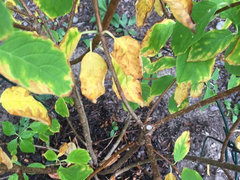Excitement About Hydrangea Leaves Turning Yellow
Excitement About Hydrangea Leaves Turning Yellow
Blog Article
Not known Factual Statements About Hydrangea Leaves Turning Yellow
Table of ContentsFascination About Hydrangea Leaves Turning YellowThe Facts About Hydrangea Leaves Turning Yellow UncoveredNot known Factual Statements About Hydrangea Leaves Turning Yellow The Facts About Hydrangea Leaves Turning Yellow Uncovered
Hydrangea plants are understood for their attractive blossoms, yet in some cases their fallen leaves can turn yellow. This is usually an indicator that something is wrong and the plant needs your help. There are a number of feasible reasons for yellow leaves on Hydrangeas, and the good news is the majority of them are simple to repair. Here we'll cover one of the most typical reasons for Hydrangea leaves transforming yellow and exactly how to fix them.Hydrangea leaves transforming yellow can be a cause for problem. Hydrangea leaves commonly turn yellow when the plant is overwatered.
When the origins of a plant are submerged in water for extended periods, they begin to suffocate and rot. This process cuts off the roots' oxygen supply, creating the leaves to transform yellow and at some point die. Overwatering can likewise lead to various other problems such as leaf decline, origin damage, and fungal growth.
If you assume your Hydrangea is overwatered, the very best service is to allow the soil dry out entirely before watering once again. It's additionally a great concept to inspect the drainage of your pot or garden bed and ensure that water is not pooling around the plant's origins. Hydrangea plants require well-drained dirt to thrive.
The Ultimate Guide To Hydrangea Leaves Turning Yellow
Hydrangea leaves can additionally transform yellow if the plant is not getting enough water. This takes place when the plant does not receive adequate water, and the dirt begins to dry out.

This is understood as "fertilizer burn," It takes place when the plant's origins are exposed to as well much fertilizer. Various other signs of fertilizer melt include brown or yellow fallen leaves, wilting, and stunted growth.
This will certainly help remove any type of excess plant food from the origins of the plant. It's also a great concept to reduce webpage the quantity of fertilizer you are utilizing.
An Unbiased View of Hydrangea Leaves Turning Yellow
If your Hydrangea is ravaged with pests, treating the plant with neem or gardening oil is the most effective solution. It's also great to get rid of any kind of damaged fallen leaves from the plant. You can do this by hand or with a set of trimming shears. It's likewise an excellent idea to check the plant routinely for insects and eliminate them as quickly as you see them.
To stay clear of spreading out the illness, guarantee to sanitize your scissors before reducing any leaves off. Hydrangea leaves can additionally transform yellow if the temperature worries the plant. This normally happens when the plant is exposed to severe chilly or warm. The fallen leaves of the plant will turn yellow and begin to leave.
If the temperature level emphasizes your Hydrangea, you need to move the plant to a location where it will certainly be secured from the extreme cool or warm. You can also attempt to give the plant with some partial color if subjected to direct sunshine. You can additionally attempt adding compost around the plant base to assist regulate the temperature level.
Some Known Details About Hydrangea Leaves Turning Yellow
The fallen leaves can additionally turn yellow if the Hydrangea plant has origin rot. click this site This is generally created by overwatering or bad water drainage. When the plant's roots are immersed in water for as well long, they start to rot. Among one of the most usual root rot signs is yellowing fallen leaves, as the fungus protects against the roots from taking in nutrients from the soil.
Various other signs of origin rot consist of stunted development, wilting, and leaf decline. Examine the roots of your Hydrangea if it has origin rot. If they are black or brownish, then they are possibly rotten. If some healthy origins are left, you can try to save the plant by replanting it in look at here a brand-new pot with fresh dirt.
Water the plant thoroughly, making sure not to overwater it. If your Hydrangea is heavily impacted by origin rot, beginning with a brand-new plant is best. All-natural causes can likewise trigger yellow hydrangea leaves. One of the most typical reason is the plant's age. As Hydrangeas age, their leaves will slowly turn yellow and brownish prior to dropping off the plant.
You can assist the plant by guaranteeing it is obtaining sufficient water and nutrients. One opportunity is that the plant is not obtaining adequate water.
Report this page